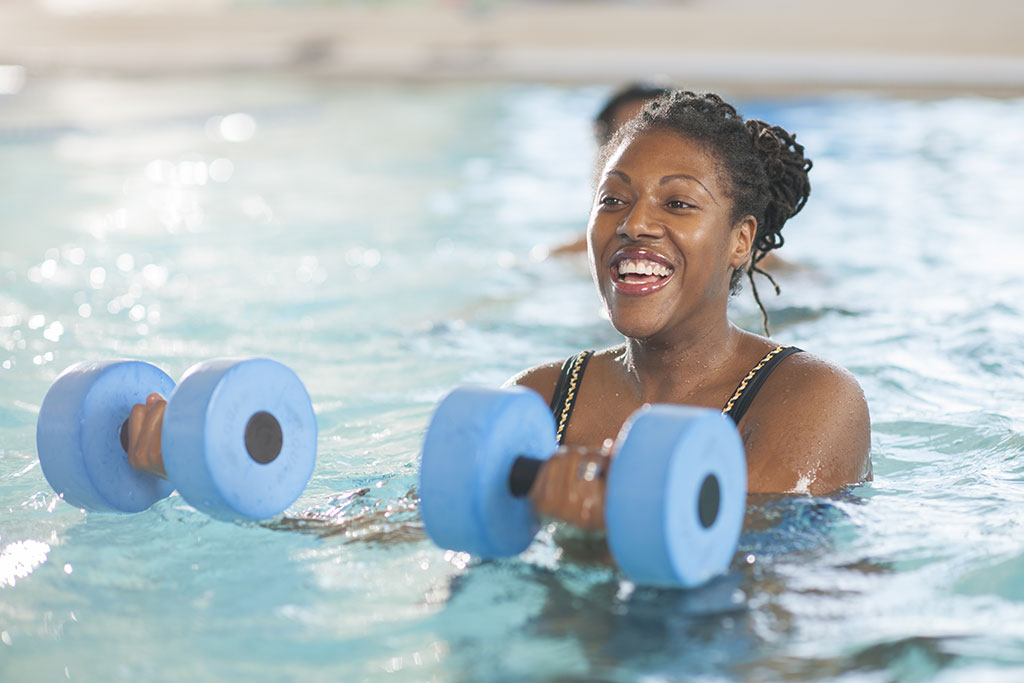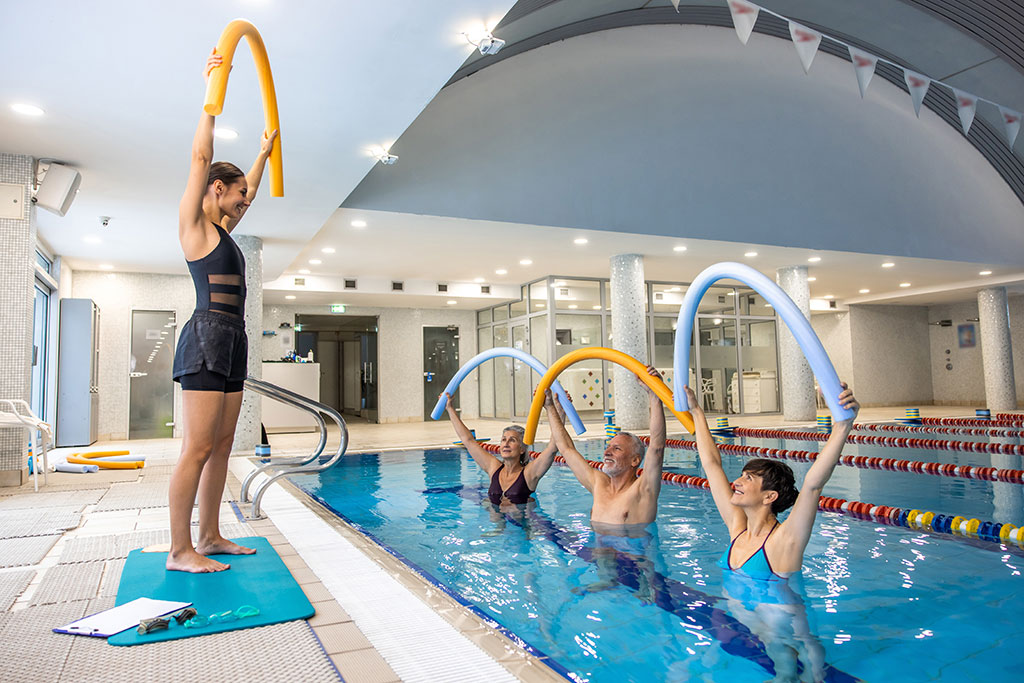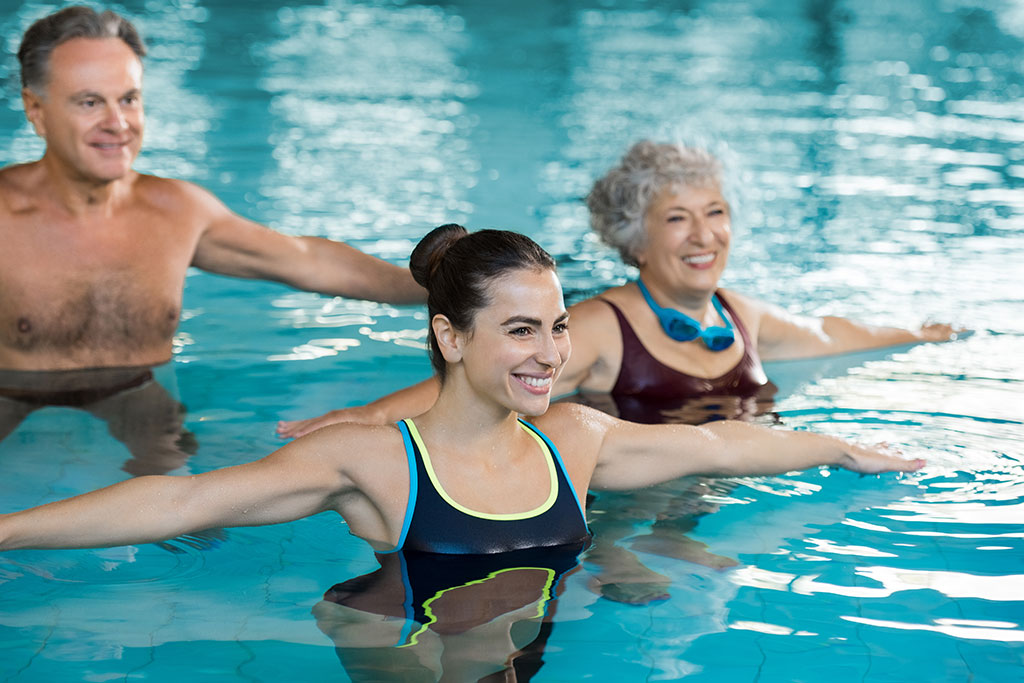As sustainability continues to gain popularity, more individuals are being mindful of their carbon footprint and general impact on the planet—including in their travels. Fortunately, it’s easier than ever to plan a green vacation, allowing you to enjoy your time away while also helping to protect the earth’s future.

The first step is to make thoughtful choices about the clothing and other items you pack. For one, aim to travel light, whether you’ll be driving, flying, or boarding a train; doing so means less fuel will be required for your transportation, resulting in fewer polluting emissions overall. Stick to a smaller wardrobe featuring versatile tops, bottoms, and shoes that can be mixed and matched for multiple occasions and easily hand-washed if needed. For instance, a casual T-shirt pairs well with shorts for a walk downtown but can also be dressed up with sleek trousers for an evening out. Meanwhile, the only two types of shoes you may need are a pair of sneakers and something less casual for nicer occasions.
In addition, try to avoid creating single-use waste on your trip by bringing utensils and a straw you can utilize as needed at eateries and for takeout; just as valuable is a refillable water bottle with a filter, which can remove potential contaminants from local tap water. If you need to purchase toiletries ahead of leaving, you could also switch to a biodegradable bamboo toothbrush and opt for bars of soap and shampoo instead of bottles. On that note, resist taking those complimentary mini shampoo and conditioner bottles from the hotel—they may just end up in a landfill later.

While venturing to a far-off locale can be thrilling, it can also eat up a lot of fuel. Some commercial planes can burn as much as twelve tons of it an hour, producing significant amounts of detrimental greenhouse gases. Instead, consider embarking on a road trip to explore beautiful destinations closer to home. If clean mountain air and sweeping vistas call to you, investigate natural destinations within your reach—perhaps the stunning Lake Tahoe, which straddles California and Nevada, for West Coasters or Smith Mountain Lake in Virginia for East Coasters. Both locations offer pristine waters ideal for swimming, kayaking, or simply relaxing along the shoreline. Alternatively, if the vibrant energy of a city experience beckons, take a short drive to a nearby bustling metropolitan area, where you can explore enriching museums, shop the storefronts for unique wares, and dine at fine restaurants to your heart’s content.
Of course, car travel does still leave a mark on the environment, so make sure to adopt sustainable measures to mitigate its effect. Consulting a navigation app will help you both map the most fuel-efficient route and circumvent drive-lengthening detours and traffic. Then when driving, maintain a steady speed to save fuel, using cruise control when possible; by avoiding unnecessary acceleration and braking on highways, you can reduce your total energy expenditure.
Another viable green option is train travel, which produces 72 percent fewer greenhouse gas emissions per passenger than planes and 83 percent fewer than cars, according to Amtrak. And with over thirty routes reaching more than five hundred destinations, you could go just about anywhere. For example, hop aboard Amtrak’s Vermonter to visit any of the eclectic locales it stops at between Washington, DC, and St. Albans, Vermont. You could explore the iconic monuments in our country’s capital, catch a Broadway show and savor diverse cuisines in New York City, or lounge on the beach in the charming town of Waterbury, Vermont.
All that said, if you dream of traveling across the country or even overseas, you can still get your ideal vacation with careful planning. When possible, book a nonstop flight—much of a plane’s consumption occurs during takeoff and landing—or, at least, a trip with a relatively direct path. Also keep in mind your aircraft, searching for one that uses sustainable fuel, such as the Boeing 787. Further, rather than simply flying economy, consider a plane with more economy seats overall. Business and first-class sections take up more room, and the higher the seating capacity, the less the environmental impact per passenger since the fuel consumption is spread across more people.

Selecting accommodations that prioritize conservation is an effective way to contribute to a greener trip. Many hotels, for instance, now minimize the need for artificial lighting by featuring large windows, provide guests with hydration stations for refilling their water bottles, and implement energy-saving features like smart thermostats and solar panels. You can usually find such details on their websites or in their listing information, or call to inquire directly.
As for your stay, there are several simple strategies that may reduce your environmental impact. Primarily, try to keep your showers to four minutes or less, turning off the water while you lather or shave to conserve even more, and set the thermostat at a moderate temperature. You can also limit your requests for daily housekeeping services, such as towel and sheet changes—the less that has to be washed from your room, the smaller your overall energy impact.

Make sure to carry over this sustainability mindset when determining your vacation itinerary as well. For recreation, this could mean enjoying a serene walking tour in the city instead of a bus one to see the sights. And when in the scenic wilderness, stick to marked trails and avoid littering to protect natural habitats. Be similarly mindful when dining out, choosing restaurants that source their ingredients locally to support area farmers and minimize the environmental costs of getting food to your plate. As a bonus, you’ll also be treated to fresher, more flavorful meals. Lastly, don’t forget the souvenirs! Prioritize handmade trinkets from artisans over mass-produced ones, or consider shopping for previously owned but well-made items at antique or thrift shops.
Enjoying a dream vacation while still being mindful of the planet doesn’t have to be difficult. By making thoughtful, eco-conscious choices throughout your trip, you can both create lasting memories and contribute to the earth’s well-being.
Fitness fads come and go, but few have endured like water aerobics, an option that brings a breath of fresh air to the dreaded workout routine. No one should be surprised by the popularity of this approach—after all, it is an incredibly low-impact way to increase your strength, endurance, and flexibility, all in a revitalizing setting. Whether you’re looking to launch your exercise journey or add variety to your current regimen, take a closer look at the upsides of aqua fitness along with tips for getting started.

Working out in water is all about getting the most out of your efforts with the least amount of strain. Luckily, the nature of water makes this easy. The warmth of it helps your muscles relax, and your body’s natural buoyancy while in it reduces the force on your joints, making your movements more fluid. As a result, you can exercise with much less risk of aggravating existing problems—ideal for seniors and those living with a chronic condition like arthritis.
However, that’s not to say aqua fitness is a total breeze. Thanks to the natural resistance it provides, water has the ability to increase the intensity of even the most basic moves, helping to work your body harder without you necessarily having to push it to the limit. In fact, just about every muscle group is engaged during water aerobics, from your upper and lower body to your core. Strengthening the latter in particular will also help improve your balance and coordination, especially if you incorporate exercises specifically designed to go against the water’s resistance. And, on top of all that, your cardiovascular endurance will improve as well, reducing your risk of issues such as high blood pressure and heart disease.

There are substantial mental benefits to water aerobics in addition to the physical ones. For one, many people find that simply being near water helps them unwind, an effect commonly known as “blue mind.” Submerging yourself in it causes a cascade of physiological reactions that alleviate stress, including increasing endorphins and decreasing the stress hormone cortisol. Spend just half an hour splashing around in the pool, and you may leave feeling dramatically calmer and relaxed, your daily worries washed away.
Besides its impact on certain hormones, aquatic exercise may also increase neurochemicals that reduce inflammation and arterial stiffness in the brain, which, in turn, enhances blood flow. These factors have been shown to support greater cognition as well as stronger memory. A study published in the International Journal of Environmental Research and Public Health even found that older adults who underwent a twenty-eight-week water aerobics program showed significant improvements in general mental function, not to mention functional fitness and muscle mass. With such all-around advantages, this may just be one of the best approaches to working out you could try.

There’s no need to be intimidated if you’ve never done aqua fitness before. The key to maximizing your experience is to ease into it and gradually increase your stamina. Consider these basic exercises to help you get started.
Water walking
Just as you would on land, walk across the shallow end of the pool, about waist-deep, moving your arms at your side in a natural swinging motion. Keep your posture upright, and engage your core to maintain your balance as you move. To make the exercise more challenging, gradually transition into deeper water. This will increase the resistance on your muscles without straining your joints.
Treading water
A staple of swimming classes, this activity can provide a surprisingly decent cardio workout. Venture far enough into the deep end where your feet can’t touch the bottom, then use a combination of flutter kicks and arm sweeps to remain buoyant. Continue for one to two minutes at a time, increasing the length as your strength improves.
Aqua jogging
Take treading water a step further by trying aqua jogging, also done in the deep end. Keeping just your head above water and your chest upright, alternate raising your knees high while swinging your arms, as if running, in rhythm with your legs. For additional support, wear a flotation belt to help you stay afloat so you can focus on your form.

Arm circles
Standing in water at shoulder height, lift your arms straight out to the sides and move them in circles; start with small rotations that gradually increase in size. To boost the intensity, alternate between fast and slow circles or add resistance with water weights. Be sure to keep your arms submerged to engage the muscles in your upper back, arms, and shoulders effectively.
Leg lifts and kicks
In waist-deep water, stand tall with your feet shoulder-width apart. Extend one leg forward, then to the side, and finally to the back, holding each position for a couple of seconds. Your movements should be slow and controlled to work the different muscle groups in your legs and core. Another option to strengthen your hip flexors and glutes is flutter kicks, which involve holding a kickboard or the side of the pool as you kick your legs behind you.
Water squats
Similar to leg lifts, spread your feet shoulder-width apart while in water that’s at least waist-deep. Keeping your back straight, bend your knees and push your hips back as if sitting in a chair. Once your thighs are parallel to the floor, stand back up. To add difficulty, include a small jump as you rise from the squat or hold water dumbbells in each hand.
Aqua fitness provides a low-impact alternative that anyone can enjoy, from exercise novices to workout champions. Dive into this activity, and you can unlock a world of benefits that are as refreshing as they are effective.
*Consult with your doctor before starting any new exercise routine, especially if you have existing pain or medical conditions.
Nothing beats the summer heat like a frozen treat, and one that often goes under the radar is sorbet. Requiring few ingredients and little effort, these recipes can be easily prepared ahead of time and served at any occasion. Best of all, each is bursting with fresh fruit—adding healthy nutrition to every spoonful.
Blueberries are a nutrient- and antioxidant-rich superfood, and this delicious dessert is chock-full of them along with a hint of mint.
Peach is a sweet fruit that’s at peak freshness this time of year, making it a perfect choice for this unforgettable velvety dessert.
This recipe combines two refreshing warm-weather options—strawberries and rosé—for the ultimate pop of flavor.
Sweet blueberries are paired with their classic counterparts—tangy lemon and cool mint—in this dessert, creating a whirlwind of flavors.



Here’s a distinctly Southern twist on sorbet, which kicks the sweetness and texture up even more by adding creamy mascarpone to the mix.



Juicy strawberries are a summer staple, and this recipe is loaded with them—as well as complementary, subtle notes of rosé.



In today’s hyperconnected world, technology has worked its way into virtually every aspect of our lives. From our leisure routines to our busy workdays, we often drift from one screen to another as we weave between daily responsibilities and hobbies, tethering ourselves alternatively to laptops, smartphones, computer monitors, tablets, and TVs.
While these gadgets certainly offer valuable conveniences and spur innovation, our overreliance on them can come with significant known drawbacks to our mental health, social connections, and physical well-being. But unplugging for at least part of each day can open a world of benefits, including freeing up time to savor the ample activities available beyond the blue light of devices.

Perhaps the best place to start is with an aspect of technology that’s a bit of a double-edged sword: accessibility. As much as they keep us connected to what’s happening, constant notifications, emails, texts, and social media updates are often overstimulating, and they can lead to information overload and heightened stress levels. Just ask Nathanael Tyre at the Digital Wellness Institute, a research organization that aims to help people and businesses “get the most out of their tech—without feeling like tech gets the most out of them.” He reports that excessive screen time is linked to anxiety and depression, particularly in children. The only solution? Taking breaks from technology to escape the barrage of news, reset your mind, and lessen your unease.
Devices can also distract us from the people around us. Eye contact, active listening, and shared experiences are essential to strengthening bonds, and much of that is lost when you and your loved ones are scrolling on screens. If you instead devote your undivided attention to others, you could hold more meaningful interactions and develop deeper connections. Even a single change can have a huge impact. For instance, after making the decision to avoid work notifications when outside the office, a community member of the Digital Wellness Institute found that “having digital boundaries . . . has given me more quality time with my family and reduced my stress significantly.”
The biggest issue with spending too much time on screens, though, may be that it encourages a sedentary lifestyle. Being overly idle contributes to all sorts of health issues, such as obesity, heart disease, and diabetes. But minimizing your device use and working in more physical activities, whether it’s going for a walk, enjoying a manual craft, or simply stretching, can help stave off these risks. It can also alleviate eye strain and improve sleep by limiting blue light exposure before bedtime. Add to that the potential benefits to your workday, including improved time management and reduced distractions, and you only stand to benefit in just about all facets of your life when you moderate your screen sessions.

The idea of unplugging may seem daunting or even dull, leaving you twiddling your thumbs about what to do without an entertaining tech device. The key to successful screen separation is to replace gadget time with other enriching activities that empower you to live a more well-rounded life. Here are some ideas to help kick-start your journey.
Take a walk
Nature offers a perfect antidote to the digital world—being among the greenery and fresh air can reduce stress, boost your mood, and enhance your memory. Either alone or with a loved one, consider taking a leisurely stroll in a park, having a picnic by a lake, or tying on your hiking boots to hit a rugged trail. To make your time outdoors feel even more engaging, try your hand at bird-watching or identifying local plant life, both of which can provide a sense of satisfaction and connection to your environment. And while you may be tempted to add a soundtrack to your activities, truly unplugging means leaving your headphones at home so you can take in the surrounding natural soundscapes or converse with your companion.
Pick up a book
Escape into a fictional world with a good old-fashioned book. Reading stimulates your brain, expands your vocabulary, and can open the door for fulfilling social occasions such as book club meetings. While you can get these same benefits with e-books, opt for physical versions to better immerse yourself in stories without the distractions of ads or notifications or the negative effects of blue light.

Learn something new
This is your opportunity to develop a new talent, including painting, knitting, or playing a musical instrument. Such hobbies lend a creative outlet and feeling of accomplishment, especially as you see your skills develop or complete a project like an intricate jigsaw puzzle. One of the healthiest activities you could pursue is enhancing your cooking skills—after all, home cooking is cheaper and generally more nutritious than dining out. To become a true artisan in the kitchen, delve into international techniques or take up baking intricate desserts.
Give back
For a satisfying way to spend your time offline, consider engaging in community service or simply helping someone in need. For instance, you could volunteer at a local shelter, participate in a cleanup drive, or mentor an individual in your neighborhood. Acts of kindness not only make a difference in others’ lives but also provide you a sense of purpose, going a long way toward enhancing your personal satisfaction and mental health.
Ultimately, moderating screen time is not about rejecting technological advancements but finding a healthier way to utilize them. If you need a little help getting going, try setting tech-free zones (the bedroom is a great place to start) or screenless sessions, such as the final two hours before bedtime. You could even implement time limits on your smart devices and schedule more in-person catch-ups than virtual ones. However you approach it, making a concerted effort to step away from screens may just allow you to recharge your mind and body, strengthen your relationships, and rediscover the joys of the offline world.







